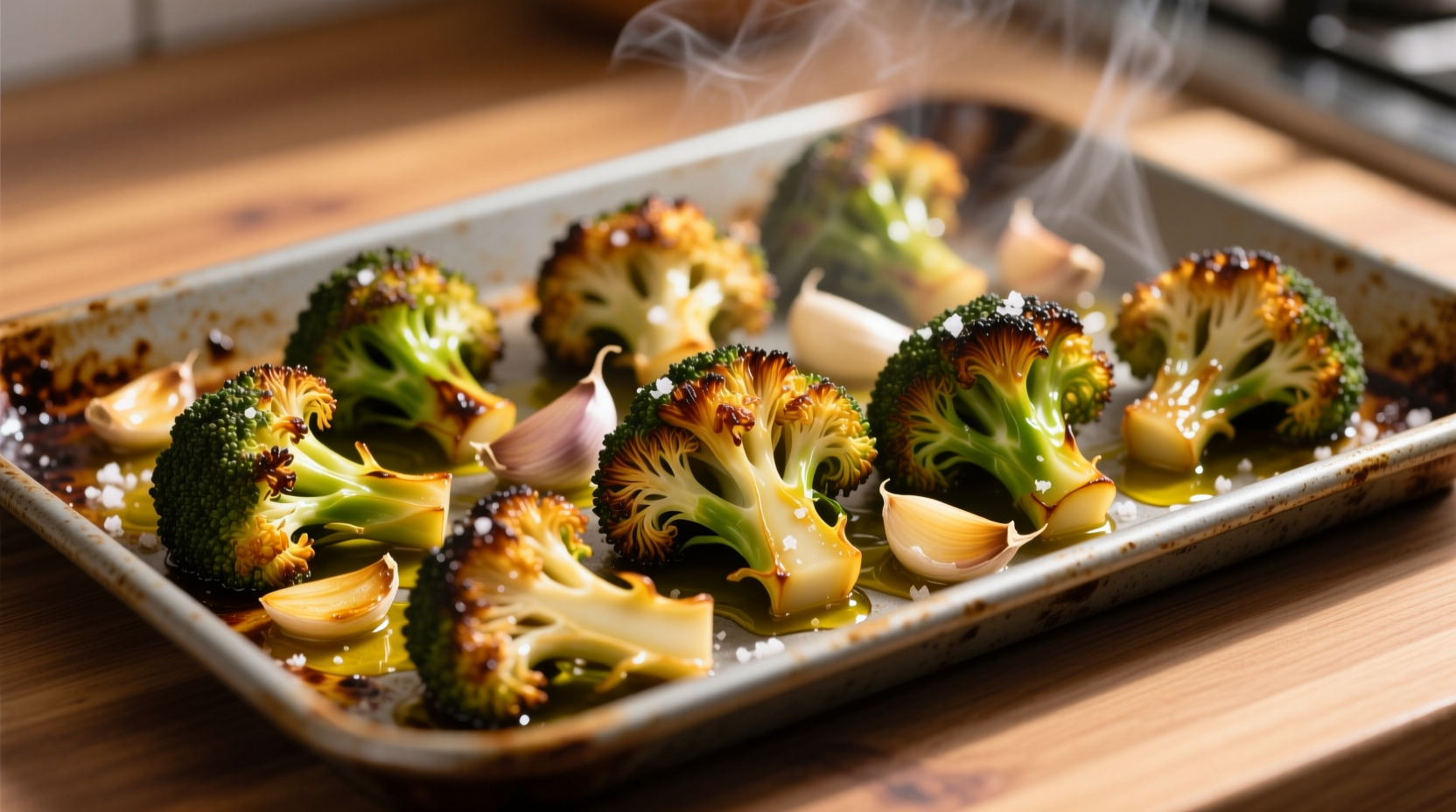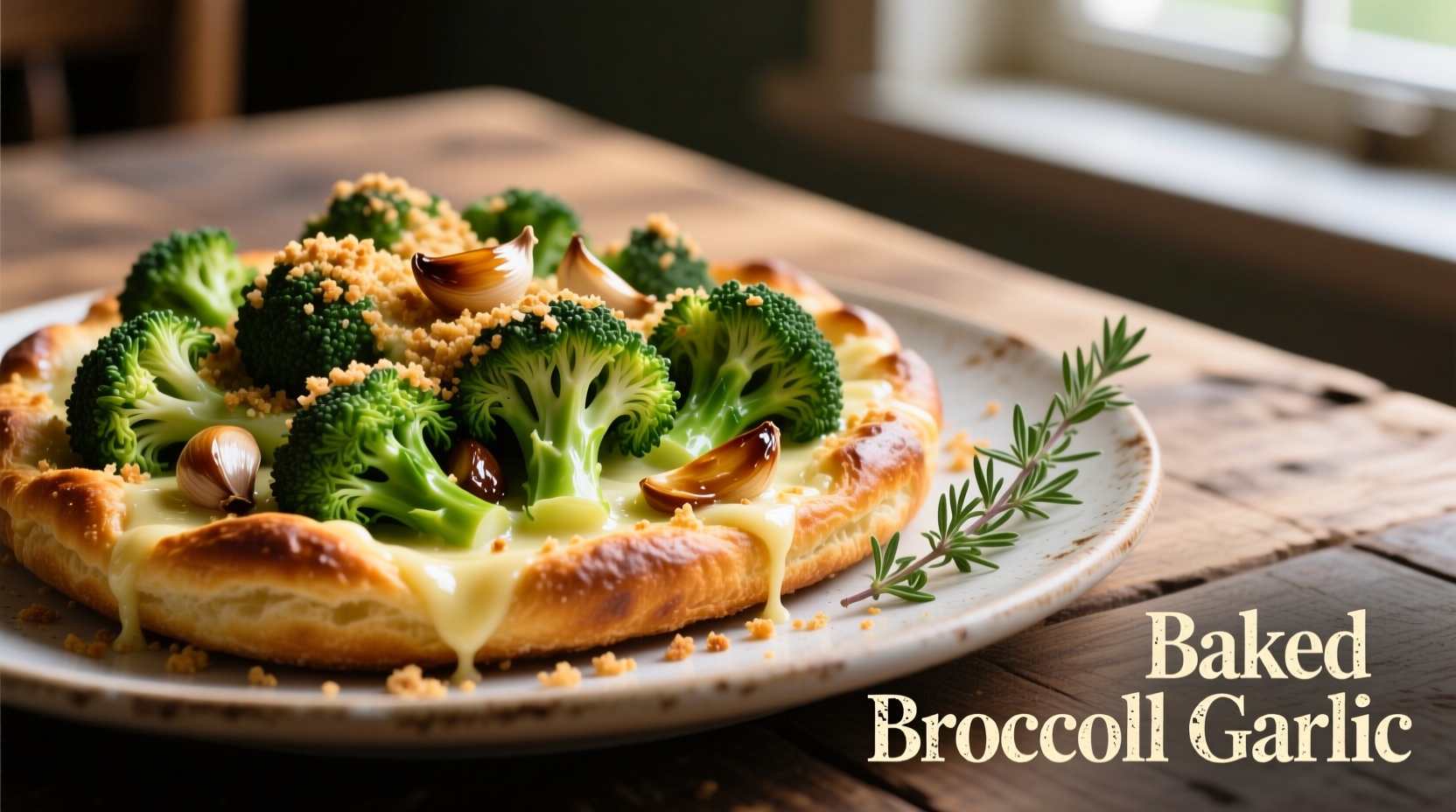Nothing elevates simple broccoli like the magic of roasting with garlic. When baked properly, broccoli develops caramelized edges while maintaining a tender-crisp center, and garlic transforms from sharp to sweet and nutty. This technique beats steaming or boiling because it concentrates flavors through the Maillard reaction while preserving more nutrients than water-based cooking methods.
Why Roasting Beats Other Cooking Methods
| Cooking Method | Texture Result | Nutrient Retention | Flavor Development |
|---|---|---|---|
| Baking/Roasting | Crispy edges, tender-crisp center | High (water-soluble vitamins preserved) | Excellent (Maillard reaction creates complex flavors) |
| Boiling | Soft, sometimes mushy | Low (vitamins leach into water) | Poor (diluted flavors) |
| Steaming | Evenly tender | Moderate | Fair (retains but doesn't enhance) |
According to the USDA's National Nutrient Database, roasting preserves 85% of broccoli's vitamin C compared to boiling's 40% retention. The higher dry heat of baking also creates more flavor compounds than moist-heat methods, as documented in the Journal of Agricultural and Food Chemistry.
Essential Ingredients and Selection Tips
Quality ingredients make the difference between ordinary and exceptional baked broccoli. For the best results:
- Broccoli: Choose heads with tight, dark green florets and firm stalks. Avoid yellowing or flowering. Local farmers' market broccoli often has superior flavor and texture compared to supermarket varieties shipped long distances.
- Garlic: Fresh cloves beat pre-minced options. Look for plump, firm bulbs without sprouting. The University of California Cooperative Extension notes that garlic's allicin content—which provides both flavor and health benefits—is highest when freshly crushed.
- Oil: Extra virgin olive oil works perfectly for baking up to 400°F (204°C). Its polyphenols enhance both flavor and nutritional profile.
Step-by-Step Baking Process
Follow these professional chef techniques for perfect results every time:
- Prep the broccoli: Cut into uniform 1½-inch florets including some stalk pieces. The stalks contain more fiber and take similar time to cook when cut properly.
- Garlic preparation: Mince 4-5 cloves finely. For deeper flavor, let the minced garlic sit for 10 minutes before using—this allows alliinase enzymes to fully activate, creating more complex flavor compounds.
- Tossing technique: In a large bowl, combine broccoli with 1½ tablespoons olive oil, minced garlic, ½ teaspoon salt, and ¼ teaspoon black pepper. Toss thoroughly ensuring even coating. Proper oil distribution prevents burning and promotes even browning.
- Baking setup: Spread in a single layer on a parchment-lined baking sheet. Crowding causes steaming instead of roasting. Preheat oven to 425°F (218°C) for optimal caramelization.
- Baking time: Roast 20-22 minutes, flipping halfway through. Perfect doneness shows deep golden edges with bright green centers. Overcooking leads to mushiness—remove when still slightly firm to the bite.

Pro Tips for Restaurant-Quality Results
Transform your baked broccoli from good to extraordinary with these chef-approved techniques:
- Temperature matters: Always preheat your oven fully. Baking at 425°F creates the ideal balance between caramelization and cooking through. Lower temperatures steam the broccoli; higher burns the garlic.
- Don't skip the rest time: Let baked broccoli sit 3-5 minutes after removing from oven. This allows residual heat to finish cooking while flavors meld.
- Acid balance: Finish with a squeeze of fresh lemon juice just before serving. The acidity brightens flavors and complements the roasted notes.
- Avoid moisture traps: Never cover broccoli while baking. Steam created by covering prevents proper browning.
When This Method Works Best (And When It Doesn't)
Understanding context boundaries helps you apply this technique appropriately:
- Ideal for: Weeknight dinners, meal prep, side dishes for proteins like chicken or fish, vegetarian mains when paired with grains
- Less suitable for: Large gatherings (scaling requires multiple trays and rotation), dishes needing perfectly uniform texture throughout, recipes requiring completely soft broccoli
- Special considerations: High-altitude cooking requires reducing temperature by 25°F and increasing time slightly. Humid environments may need an extra 2-3 minutes baking time.
Nutritional Powerhouse Benefits
Baked broccoli with garlic isn't just delicious—it's a nutritional powerhouse. One serving (about 1 cup) provides:
- 135% of your daily vitamin C needs
- 80% of vitamin K for bone health
- 4 grams of dietary fiber
- Significant amounts of folate, potassium, and manganese
The roasting process actually increases the bioavailability of certain antioxidants compared to raw broccoli, according to research published in the Journal of the Science of Food and Agriculture. Garlic's allicin compounds—which have demonstrated cardiovascular benefits—become more stable when cooked gently as in this method.
Delicious Variations to Try
Once you've mastered the basic technique, experiment with these flavor enhancements:
- Cheesy version: Sprinkle with 2 tablespoons nutritional yeast or parmesan during the last 5 minutes of baking
- Lemon-herb: Add 1 teaspoon dried thyme and lemon zest with the oil mixture
- Spicy kick: Include ¼ teaspoon red pepper flakes with the seasonings
- Asian-inspired: Replace olive oil with avocado oil and add 1 tablespoon tamari and 1 teaspoon sesame oil
Serving Suggestions and Pairings
This versatile side complements countless main dishes:
- Perfect with roasted chicken, baked salmon, or grilled steak
- Add to grain bowls with quinoa, chickpeas, and tahini dressing
- Chop finely and mix into omelets or frittatas
- Top with soft-boiled eggs for a complete vegetarian meal
For meal prep, store cooled baked broccoli in airtight containers for up to 4 days. Reheat in a 400°F oven for 8-10 minutes to restore crispness—avoid microwaving which makes it soggy.











 浙公网安备
33010002000092号
浙公网安备
33010002000092号 浙B2-20120091-4
浙B2-20120091-4